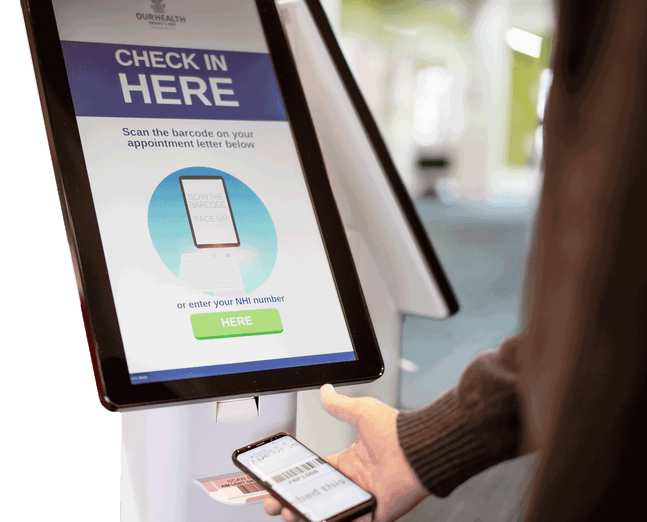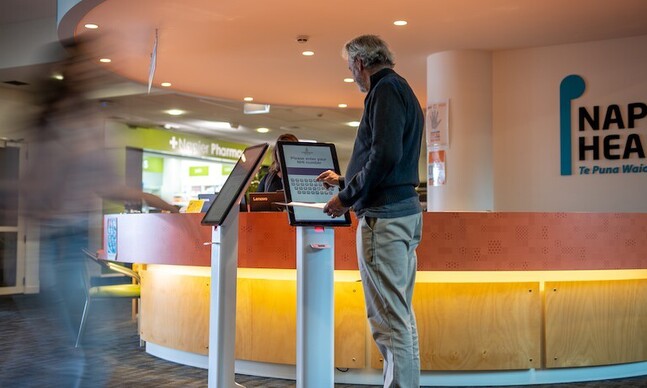It's never been more important to have efficient health systems. No one likes waiting-rooms or long check-in times. When something as important as your health is at stake, technology has a role to place in improving patient healthcare, particularly in managing inbound patients and prioritisation workflows.
Florence Healthcare believes their solution could help New Zealand District Health Boards; "DHB's right now have to figure out how to do more with what they have. In the process of handling patients, there is a lot of inefficiencies. Florence comes in and makes it all a bit smoother, gives people back their time."
Self check-in kiosks: better for both staff and patient?
Everyone knows the tedious questions and procedures at a doctor or hospital. "So there's all this interaction going on," explains Michael Greenstein "and it takes time for you to check-in, meanwhile, there are 10 people queued behind you who also want to check-in to their appointments."
The answer, according to Greenstein, is shifting these tedious processes off of people and offloading them to kiosks, almost like an Air New Zealand check-in experience, but for DHBs. "So you walk up to the kiosk, scan your letter or enter your NHI number. It asks you some questions and checks you into your appointment, then tells you what lobby to wait around in."
Florence's kiosk systems are not there to replace the incredible work that receptionists do, however. By shifting the more tedious parts of the job to technology, "it leaves more time for the receptionist to actually interface with the patient."
But how do we fix those pesky wait times?
Florence aren't just focused on kiosks, they want to improve the whole healthcare experience. They are currently trialling a way to bring certainty to those pesky unknown wait times, using intelligent NZ code...and your smartphone.
"We have self check-in, but the next question is how long is my wait going to be?" asks Greenstein, "If you were told you were going to have a 10:30 appointment and they can't see you until 11, that half-hour goes pretty easy. But if you're there at 10:30 and no one's seeing you or anything and it's 11, and you're wondering what's going on, being able to mitigate that lessens that stress."
We're trialling a patient tracking system," says Greenstein, "this system acquires timestamps of a patient's journey. We're using that data and feeding it back to the patients in the form of displays so they can see where they are in the queue."
Soon, they plan to include mobile devices in this process so that patients can have certainty around wait times, no matter where they are.


